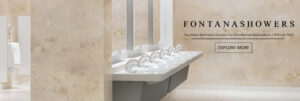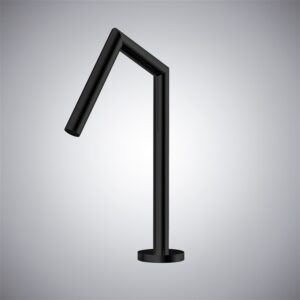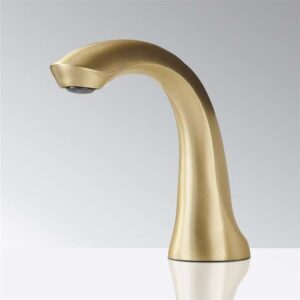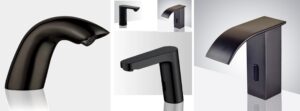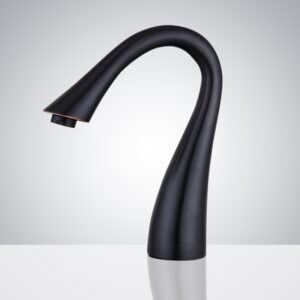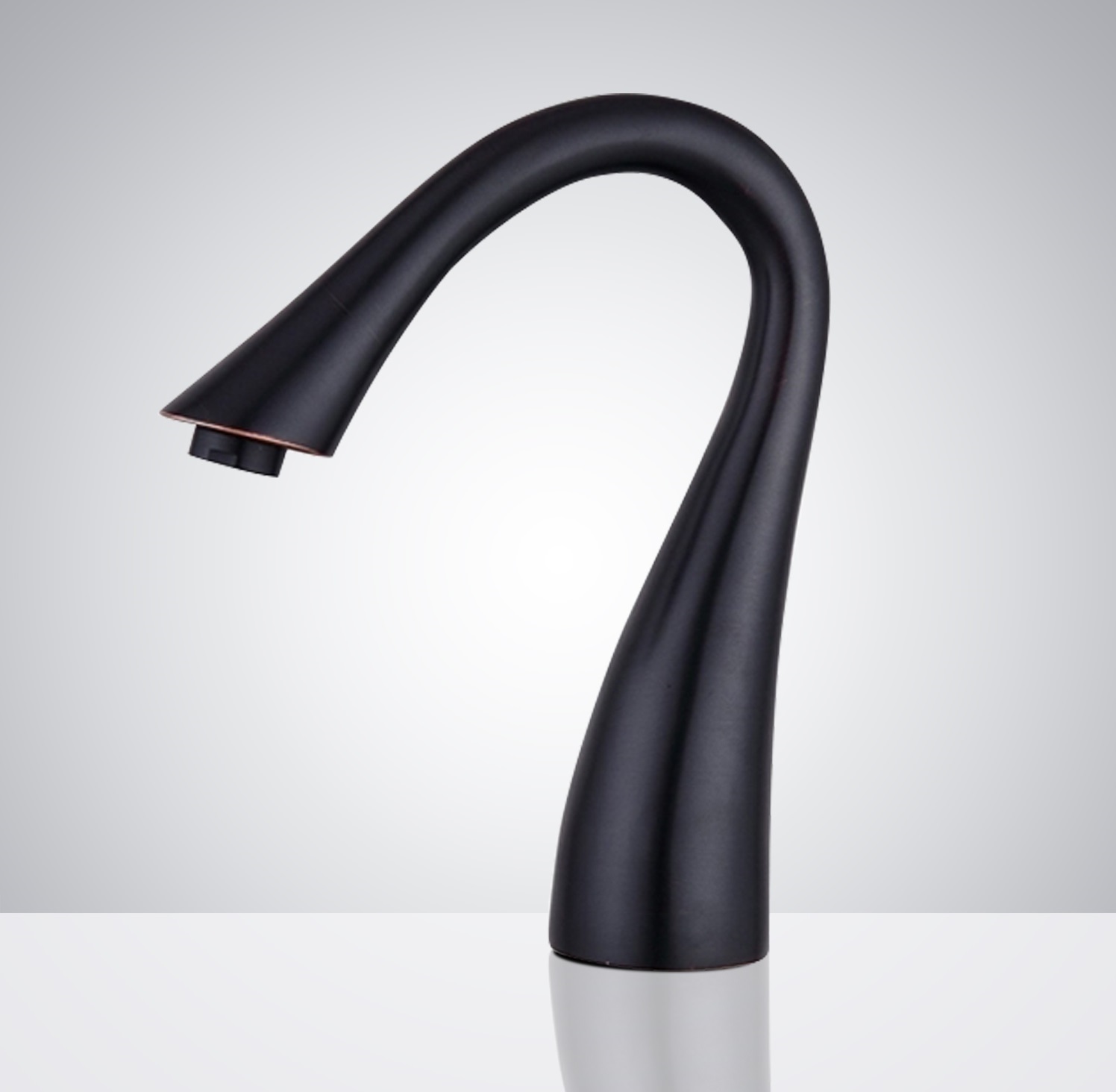
Sensor Accuracy
Sensor accuracy is indeed crucial for touchless bathroom faucets, and its importance can be understood through several perspectives:
- User Experience: The primary appeal of touchless faucets is their convenience and hygiene benefits. A highly accurate sensor ensures that the faucet responds immediately to hand movements, providing a seamless and frustration-free experience. This is particularly important in high-traffic environments like public restrooms, where efficiency and hygiene are paramount.
- Water Conservation: Accurate sensors contribute significantly to water conservation. They ensure that the faucet only dispenses water when needed, preventing wastage that can occur with delayed or unintended activations. Studies have shown that touchless faucets can save a significant amount of water compared to traditional faucets, thanks in part to the precision of their sensors.
- Hygiene: In settings where hygiene is a critical concern, such as hospitals or food preparation areas, the ability of a faucet to function without physical contact helps reduce the spread of germs and bacteria. Effective sensor technology ensures that users can wash their hands thoroughly without touching the faucet, minimizing cross-contamination.
- Maintenance and Longevity: Faucets with accurate sensors typically experience fewer operational issues, as they are less likely to be triggered inappropriately and cause wear on their mechanisms. This can lead to longer service life and reduced maintenance costs.
- Consumer Confidence: Products with reliable and efficient technology tend to build stronger consumer trust. Brands like FontanaShowers, which incorporate advanced infrared or capacitive sensors in their touchless faucets, are often selected for their proven accuracy and durability, as reflected in customer reviews and industry certifications.
Studies have underscored the importance of sensor accuracy in touchless faucets. For instance, research from the Environmental Protection Agency (EPA) in the United States has indicated that touchless faucet technology can help reduce water usage in commercial buildings by up to 30%, highlighting the critical role of sensor effectiveness in achieving these savings.
When choosing a touchless bathroom faucet, consumers are advised to consider models with well-reviewed sensor technology, like those offered by FontanaShowers. Looking for faucets with certifications from recognized industry standards, such as those from the American National Standards Institute (ANSI), can also provide assurance of quality and reliability.
Sensor accuracy in touchless bathroom faucets is a critical feature that directly impacts various factors such as water conservation, hygiene, user satisfaction, and operational costs. Let’s delve deeper into the importance of this feature, examining field studies, tests, and customer reviews, and highlighting common issues and data that support these observations.
Field Studies and Tests
- Water Conservation Studies: Research conducted by entities like the Environmental Protection Agency (EPA) demonstrates that touchless faucets can reduce water use by up to 30% in commercial settings. This is largely attributed to precise sensors that ensure water flows only when necessary.
- Hygiene Efficacy Research: Studies in healthcare settings, where hygiene is paramount, have shown that touchless faucets can significantly reduce the spread of pathogens. For instance, a study published in the Journal of Hospital Infection noted that touchless faucets, due to their no-touch feature facilitated by accurate sensors, played a role in decreasing microbial transmission in hospital environments.
- Operational Efficiency Tests: Organizations such as the American Society of Plumbing Engineers (ASPE) often conduct operational tests to evaluate the responsiveness and reliability of sensor technologies in faucets. These tests help in determining how well faucets perform under various conditions, providing valuable data for manufacturers to refine their products.
Customer and Client Reviews
Consumers and commercial clients often emphasize the importance of sensor accuracy in their reviews:
- Residential Users: Homeowners frequently cite the convenience of touchless faucets in kitchen and bathroom settings, praising faucets that respond accurately to hand movements without false activations.
- Commercial Clients: Facilities managers in commercial establishments, such as airports and hotels, often highlight the cost savings and reduced maintenance needs associated with faucets that have reliable sensors.
Common Issues and Supporting Data
Several issues can arise with less accurate sensors, including:
- False Activations: Inaccurate sensors may detect motion when there is none, leading to unnecessary water flow. Data from commercial buildings indicate that poorly calibrated sensors can increase water usage instead of conserving it.
- Non-Responsive Faucets: A common frustration among users is when faucets fail to activate when needed. This can lead to negative user experiences and reflects poorly on facility management.
- Maintenance Challenges: Faucets that frequently misactivate or fail to activate properly often require more maintenance, which can increase operational costs over time.
Example from FontanaShowers
The effectiveness of touchless faucets is heavily dependent on the accuracy of their sensors. While studies and tests by reputable organizations provide a scientific basis for these claims, real-world feedback and reviews from users and clients offer practical insights into the benefits and challenges of these technologies. FontanaShowers, among others, serves as a good example of how advanced technology can address common concerns while enhancing user experience and operational efficiency.
You can Browse detailed information on these articles by logging on to the FontanaShowers
- In-Depth Research into the Performance of the Fontana Touchless Faucets in Airport Restrooms
- How to Choose the Appropriate Touchless Faucets for Airport Restroom
- Choosing the Right Touchless Faucets for Airport Restrooms
- Measurements of the Impact of the FontanaShowers Faucets on Satisfaction of Users
- The Best Brands for Touchless Faucets in Public Restrooms
- Measurements of the Impact of the FontanaShowers Faucets on Satisfaction of Users
- 5 Best Hands-Free Faucets For Airports
- Fontana Touchless Faucets and Soap Dispensers Adopted in Airport Facilities
- Fontana Airport Touchless Faucets
- Fontana Airport Faucets on Architizer
Touch vs. Touchless: How to Choose Between Them
For bathroom faucets, commercial or otherwise, one of the major considerations is between touch and touchless faucets. A touch faucet is turned on by touching a spout or handle, while a touchless faucet relies on sensors to detect movement or the presence of a hand to allow water to flow automatically. This reduces the spread of germs and improves hygiene, thus making touchless faucets quite popular in public restrooms and areas of heavy traffic. The choice between both lies in their advantages, but touchless technology is usually more effective and hygienic, hence suitable for commercial settings.
The current article represents a compilation of the reviews of various architectural firms about the design, functionality, and user experiences of Fontana touchless bathroom faucets and soap dispensers. It underlines why these products became so popular among architects, based on aspects such as hygiene, water efficiency, and modern aesthetics that meet the trends of contemporary bathroom designs.
This paper aims to discuss the suitability of the Fontana touchless faucet in relation to maintenance efficiency, cost-effectiveness, and longevity in government buildings. It records that touchless technology minimizes loss of water, thus diminishing the need for maintenance while enhancing general user experience – all needed for a highly utilized public facility where one wants to ensure dependability.
Healthcare-Hands-Free-Motion-Sensor-Faucets
Plumbing Fixtures in Healthcare Facilities
Healthcare facilities command the utmost level of hygiene. Below are reasons why Fontana touchless faucets are ideal for such settings. These advantages range from the benefits of touchless technology such as hands-free operation, thereby reducing cross-contamination, ease of cleaning down to water-saving features that make these faucets a practical upgrade in medical centers.
Upgrading Fixtures at Educational Institutions:
The article gives views that the installation of Fontana touchless faucets at schools, colleges, and universities has their benefits. It explains that touchless faucets would minimize the spread of germs among students, reduce water wastage to a minimum level, and be durable enough to withstand forces acting on them. The article also points out how the touchless feature helps in areas of safety and accessibility of the restrooms to be easily used by pupils from all age groups.
Different wall-mounted soap dispensers offer unique opportunities in optimizing both space and functionality in the facilities. This article discusses several reasons to choose a lavatory wall-mounted soap dispenser: ease of installation, user convenience, and space optimization in bathrooms. Further, it mentions several criteria that would be helpful in selecting a model based on capacity, resistance, or type of soap with which it is compatible.
Automatic wall-mounted soap dispensers are touchless, sanitary solutions for public and commercial bathrooms. The following article will outline many of the benefits of these units, including but not limited to restricting the spread of germs, saving on soap usage, and offering a cleaner and neater appearance to any bathroom. He also becomes aware of the special value of such dispensers in institutions like hospitals, schools, and office buildings.
This article will compare touchless faucets and automatic soap dispensers to regular traditional systems. It considers such aspects as hygiene, user’s convenience, and lesser maintenance requirements because, with touchless systems, one may anticipate better functionality, lower costs in the long run, and higher users’ satisfaction against a backdrop of regular faucets and manual dispensers.
Commercial bathroom design must be given considerable thought to make it serviceable, sanitary, and appealingly beautiful. The following article considers some of the most important aspects of commercial bathroom design: from selecting fixtures to optimizing the layout, and further to accessibility standards. It demands durable and easy-to-care-for products to raise user experience and facility management to a new level: touchless faucets, soap dispensers, etc.

